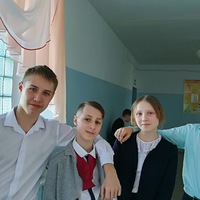
Вопрос задан 28.10.2023 в 19:56.
Предмет Биология.
Спрашивает Гевель Анастасия.
Как двигается кровь по артерии, по вене и капиллярам?
 0
0
 0
0
Ответы на вопрос
 Внимание! Ответы на вопросы дают живые люди. Они могут содержать ошибочную информацию, заблуждения, а также ответы могут быть сгенерированы нейросетями. Будьте внимательны. Если вы уверены, что ответ неверный, нажмите кнопку "Пожаловаться" под ответом.
Внимание! Ответы на вопросы дают живые люди. Они могут содержать ошибочную информацию, заблуждения, а также ответы могут быть сгенерированы нейросетями. Будьте внимательны. Если вы уверены, что ответ неверный, нажмите кнопку "Пожаловаться" под ответом.

Отвечает Скребец Полина.
Движение крови по артерии:
В артерии поступает кровь, которая уже насыщена кислородом. Давление внутри артерии - 110 мм рт. ст., движение крови происходит от сердца к органам.
Движение крови по вене:
В венах течет кровь, насыщенная углекислым газом, она движется к сердцу из органов.
Движение крови по капиллярам:
В артериальные капилляры кровь идет из артерий, после того, как она отдаст весь кислород и заберет углекислый газ, эта кровь пойдет в вены через венозные капилляры.
 0
0
 0
0

Отвечает Мұсажанов Бекзат.
По капиллярам-очень медленно, скорость течения минимальная;
по артериям-быстро, по аорте еще быстрее, давление максимальное, стенки толстые.
 0
0
 0
0

Отвечает нейросеть ChatGpt. Будьте внимательны, ответы нейросети могут содержать ошибочные или выдуманные данные.
#### How Blood Moves through Arteries, Veins, and Capillaries
Blood circulation is a complex process that involves the movement of blood through arteries, veins, and capillaries. Let's explore how blood moves through each of these blood vessels.
**Arteries** are blood vessels that carry oxygenated blood away from the heart to various parts of the body. The movement of blood through arteries is primarily driven by the pumping action of the heart. As the heart contracts, it pushes oxygenated blood into the arteries, causing them to expand and carry blood to different organs and tissues. Arteries have thick, elastic walls that help maintain blood pressure and ensure efficient blood flow.
**Veins** are blood vessels that carry deoxygenated blood back to the heart from various parts of the body. Unlike arteries, veins do not have a strong pumping action to propel blood forward. Instead, blood flow in veins is aided by several mechanisms. One of the main mechanisms is the contraction of skeletal muscles surrounding the veins. When these muscles contract, they squeeze the veins and help push blood towards the heart. Additionally, one-way valves inside the veins prevent the backward flow of blood, ensuring that it moves in the right direction. The movement of blood through veins is also influenced by changes in pressure during breathing and the action of surrounding tissues.
**Capillaries** are tiny, thin-walled blood vessels that connect arteries and veins. They are responsible for the exchange of oxygen, nutrients, and waste products between the blood and surrounding tissues. Capillaries have a large surface area and are located close to cells, allowing for efficient exchange. Blood flow through capillaries is regulated by the contraction and relaxation of smooth muscles in the walls of arterioles (small arteries) and precapillary sphincters. These muscles control the diameter of the blood vessels, regulating the amount of blood flow to specific tissues or organs.
In summary, blood moves through arteries, veins, and capillaries in a coordinated process. Arteries carry oxygenated blood away from the heart, veins return deoxygenated blood back to the heart, and capillaries facilitate the exchange of substances between the blood and surrounding tissues.
I hope this explanation helps! Let me know if you have any further questions.
 0
0
 0
0
 0
0
 0
0
Похожие вопросы
Топ вопросов за вчера в категории Биология

Биология 30
Последние заданные вопросы в категории Биология
Предметы
-
Математика
-
Литература
-
Алгебра
-
Русский язык
-
Геометрия
-
Английский язык
-
Химия
-
Физика
-
Биология
-
Другие предметы
-
История
-
Обществознание
-
Окружающий мир
-
География
-
Українська мова
-
Информатика
-
Українська література
-
Қазақ тiлi
-
Экономика
-
Музыка
-
Право
-
Беларуская мова
-
Французский язык
-
Немецкий язык
-
МХК
-
ОБЖ
-
Психология
-
Физкультура и спорт
-
Астрономия
-
Кыргыз тили
-
Оʻzbek tili



























